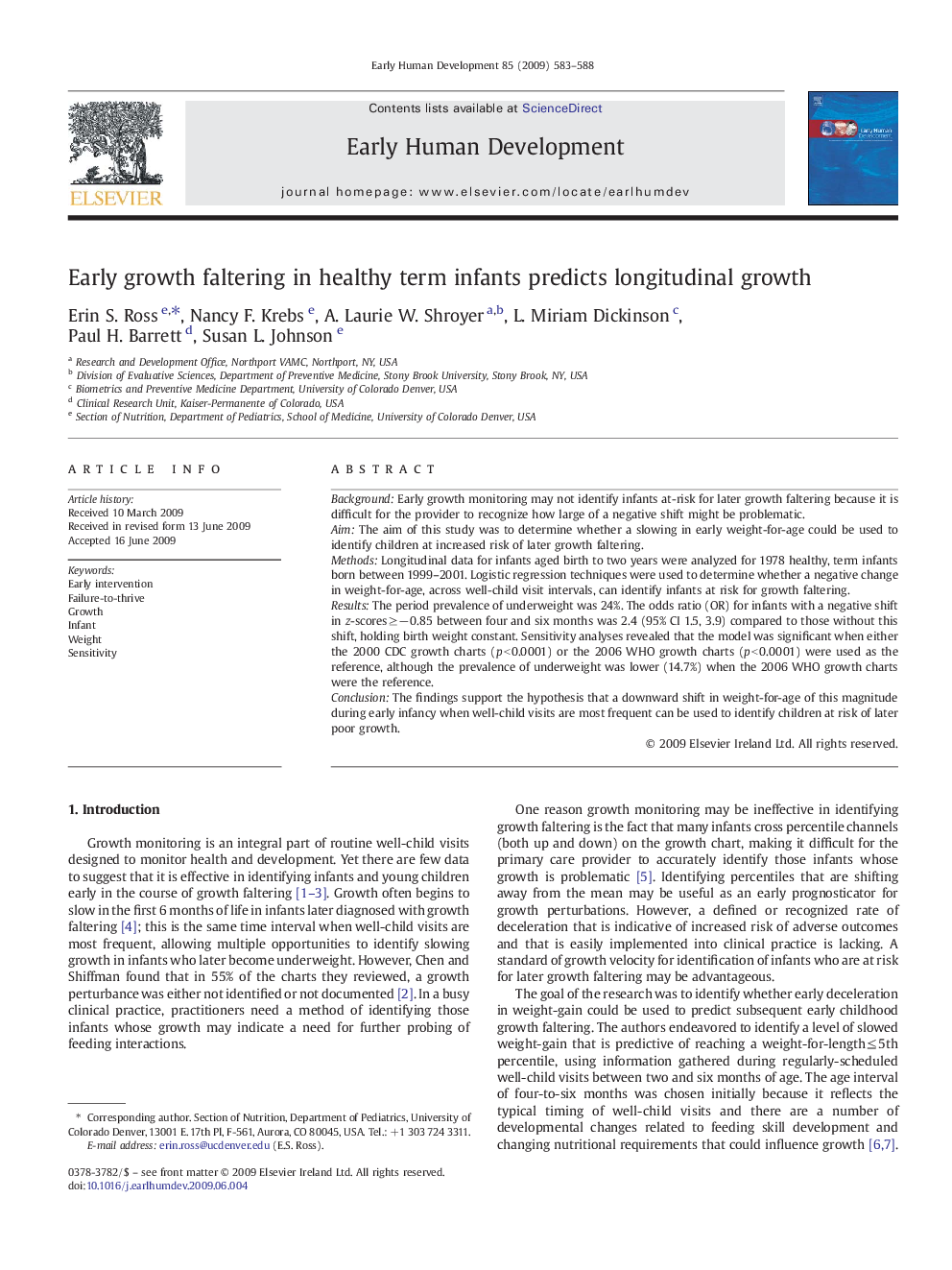| Article ID | Journal | Published Year | Pages | File Type |
|---|---|---|---|---|
| 3918541 | Early Human Development | 2009 | 6 Pages |
BackgroundEarly growth monitoring may not identify infants at-risk for later growth faltering because it is difficult for the provider to recognize how large of a negative shift might be problematic.AimThe aim of this study was to determine whether a slowing in early weight-for-age could be used to identify children at increased risk of later growth faltering.MethodsLongitudinal data for infants aged birth to two years were analyzed for 1978 healthy, term infants born between 1999–2001. Logistic regression techniques were used to determine whether a negative change in weight-for-age, across well-child visit intervals, can identify infants at risk for growth faltering.ResultsThe period prevalence of underweight was 24%. The odds ratio (OR) for infants with a negative shift in z-scores ≥− 0.85 between four and six months was 2.4 (95% CI 1.5, 3.9) compared to those without this shift, holding birth weight constant. Sensitivity analyses revealed that the model was significant when either the 2000 CDC growth charts (p < 0.0001) or the 2006 WHO growth charts (p < 0.0001) were used as the reference, although the prevalence of underweight was lower (14.7%) when the 2006 WHO growth charts were the reference.ConclusionThe findings support the hypothesis that a downward shift in weight-for-age of this magnitude during early infancy when well-child visits are most frequent can be used to identify children at risk of later poor growth.
